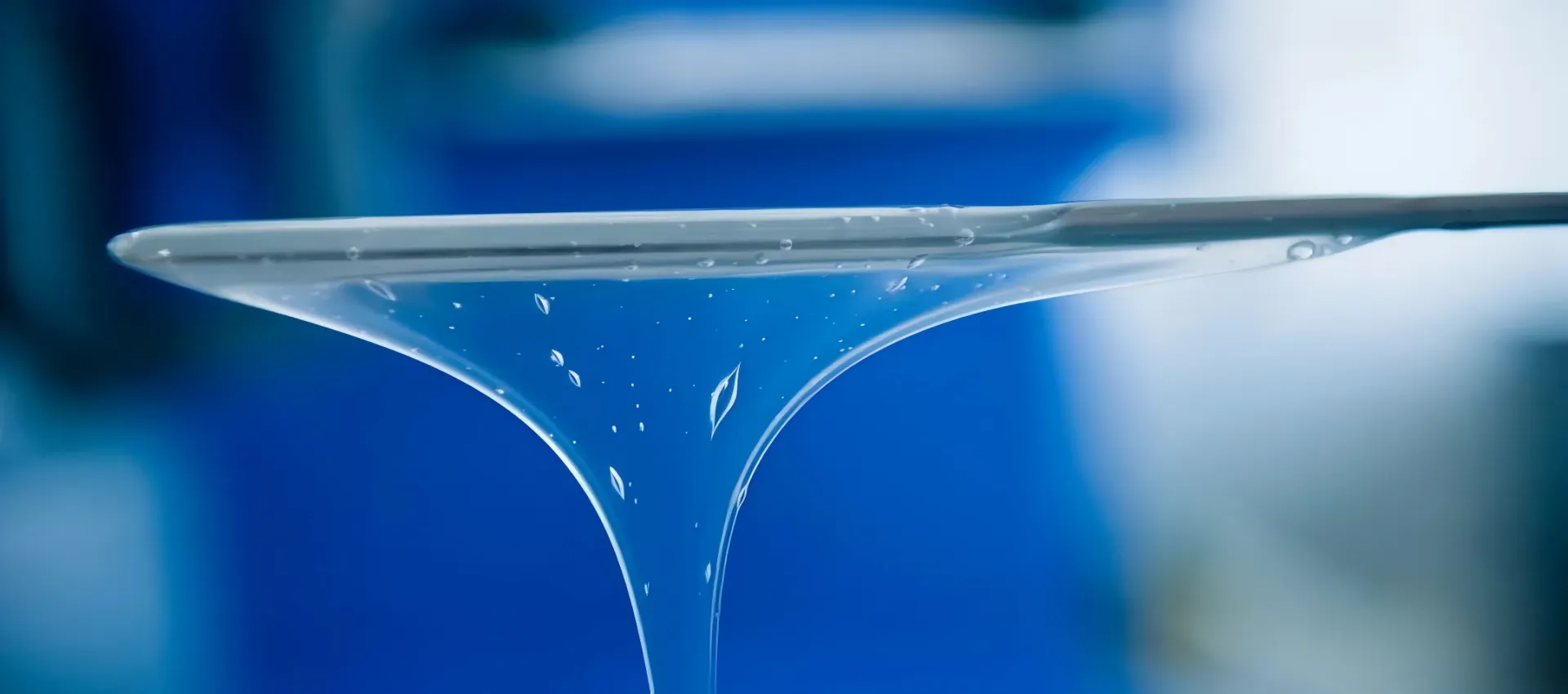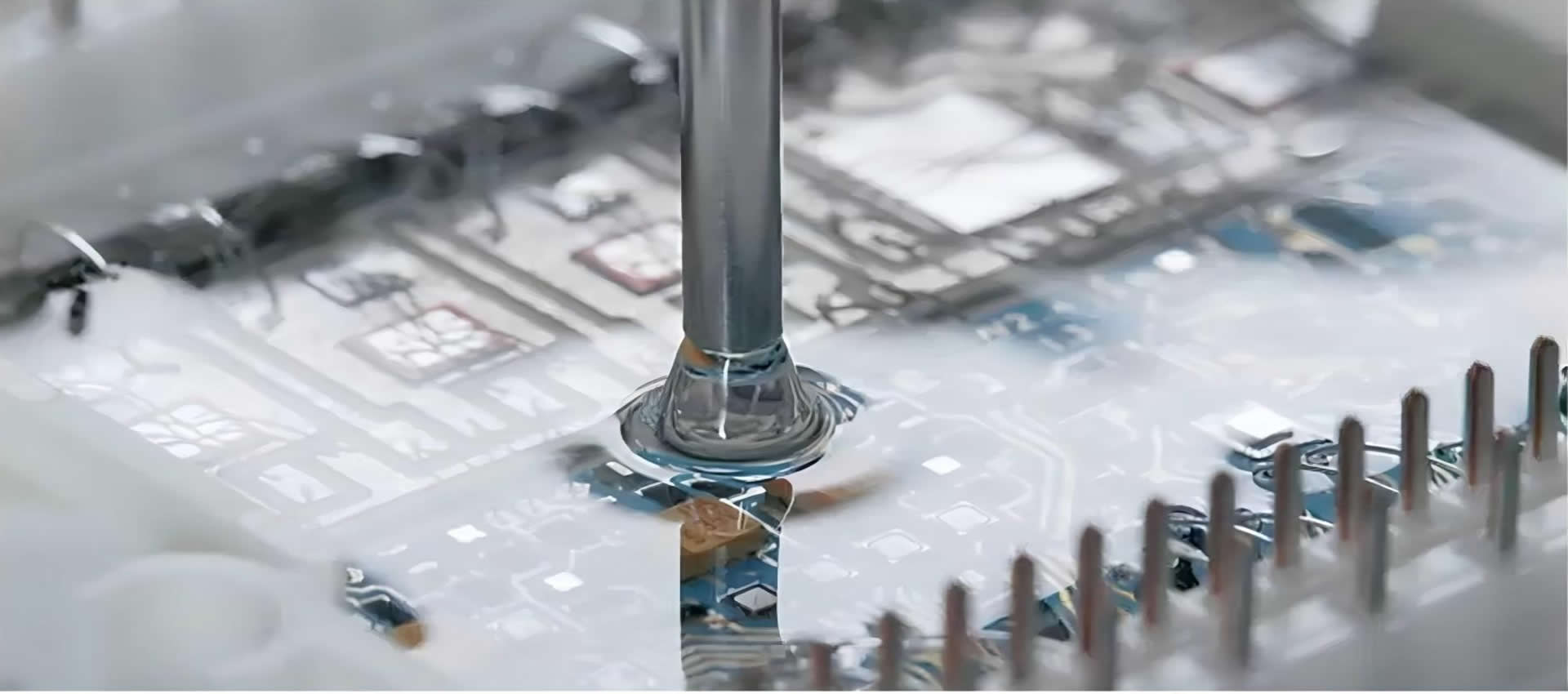
Vinyl Terminated Silicone Fluid factory

Vinyl Terminated Silicone Fluid
Everything you need to know about our products and company
Basic Product Information
TYPICAL PROPERTIES
| Appearance | Colorless Transparent Liquid |
| Viscosity (25℃),mm2/s | 70-110000 |
| Vinylcontent % | 0.06-1.08 |
| Volatile content (150℃,3h),% | ≤1.5 |
For more specifications,Please email us for detail

Physical Properties
Chemical Properties
Product Functions
The polysiloxane backbone of vinyl silicone oil offers high flexibility.
Vinyl groups enable controlled crosslinking, forming a balanced network that retains chain mobility while avoiding excessive rigidity, improving bendability and elasticity.
The low rotational energy barrier of siloxane chains maintains material softness even at sub-zero temperatures.
Uniformly distributed vinyl crosslinking sites mitigate localized stress under external forces, reducing brittle fractures.
Si-O bonds (bond energy: 452 kJ/mol) outperform organic C-C bonds (348 kJ/mol), resisting thermo-oxidative degradation.
Vinyl π-electrons absorb UV energy, coupled with silicone transparency, minimizing yellowing and chain scission from UV exposure.
Surface-enriched siloxane chains form a water-repellent layer, blocking moisture, salt spray, and corrosive agents.
Surface tension (20–21 mN/m) is far lower than mineral oils (~30 mN/m), forming uniform lubricating films with friction coefficients of 0.01–0.1.
Minimal viscosity-temperature dependence ensures stable lubrication from -50°C to 200°C (no decomposition at high temps, no solidification at low temps).
Non-reactive with metals/plastics, preventing chemical deposits at interfaces.
Vinyl groups react with substrate active sites (e.g., -OH, -NH₂), improving compatibility and preventing phase separation.
Adjust vinyl content and molecular weight to fine-tune viscosity, thixotropy, or self-leveling properties.
Vinyl groups serve as reactive sites for grafting fluorinated/epoxy groups, enabling hydrophobicity, conductivity, or other tailored properties.
Applications
Silicone Rubber Industry
Electronics & Optoelectronic Materials
Textiles & Leather
Cosmetics & Personal Care
Industrial Additives
Medical & Biomaterials
Controlled Release: FDA/ISO-certified carriers for hormones/anticancer drugs.
New Energy Sector
Core Advantages
| Performance Category | Core Advantage Parameters | Industry Value |
| Thermal Stability | – Temp. Range: -50°C to 250°C – Short-Term Tolerance: ≤300°C (1h) | Ideal for high-temperature applications (engine seals, LED encapsulation) and low-temperature resilience (arctic equipment). |
| Chemical Stability | – pH Resistance: 2–12 – Solvent Resistance (gasoline, alcohols) | Withstands harsh chemicals in chemical pipeline seals and medical device disinfection. |
| Electrical Performance | – Dielectric Strength: ≥15 kV/mm – Volume Resistivity: ≥1×10¹⁴ Ω·cm | Critical for high-voltage cable insulation and 5G base station encapsulation. |
| Mechanical Properties | – Tensile Strength (HTV): 4–8 MPa – Elongation at Break: 200–600% | Ensures tear-resistant elastic products (nipples) and compression-resistant seals. |
| Surface Properties | – Surface Tension: 20–21 mN/m – Water Contact Angle: ≥110° | Enables waterproof textiles and self-cleaning anti-fouling coatings. |
| Optical Performance | – Light Transmittance (400 nm): ≥92% – Refractive Index: 1.40–1.42 | Boosts LED luminous efficiency and anti-reflective optical lenses. |
| Reactivity | – Vinyl Content: 0.1–1.5% (adjustable) – Curing Speed (Pt-catalyzed): 30s–5min | Customizable for soft LSR or high-strength HTV via crosslink density control. |
| Biocompatibility | – ISO 10993-5 (cytotoxicity test) – USP Class VI compliant | Safe for medical implants (joint lubrication) and baby product certifications. |
| Environmental Durability | – UV Aging (QUV 3000h): ΔE <1.5 – Salt Spray Test (2000h): No corrosion | Long-term protection for outdoor PV modules and automotive exteriors. |
| Process Adaptability | – Viscosity Range: 50–100,000 mPa·s (25°C) – Resin Compatibility (e.g., PP/PC) | Optimizes injection molding flow and composite material interfaces. |
Experimental Data & Case Studies
| Function/Application | Key Experimental Data | Typical Case Study |
| Improved Silicone Rubber Flexibility | – 5% vinyl silicone oil addition: • Shore A hardness reduced by 15% (60 → 51) • Tear strength increased by 20% (to 25 kN/m) (ASTM D624) | Case: Baby nipples (a global brand) • Achieved EN1400 tear resistance (>16N) via adjusted vinyl content (0.8%). |
| Enhanced Weather Resistance | – QUV accelerated aging 3000h: • Tensile strength retention >90% • Yellowing index ΔE <1.2 (ISO 4892-3) | Case: PV encapsulation film (Top 5 manufacturer) • <5% power loss over 25 years outdoors with vinyl silicone oil-modified film. |
| Electronic Encapsulation Reliability | – Dielectric constant (1MHz): 2.7–3.2 – Breakdown voltage: 18–22 kV/mm (IEC 60243-1) | Case: EV IGBT module encapsulation • >100,000h insulation life at 150°C/85% RH (2x industry standard). |
| Durable Textile Waterproofing | – After 50 washes: • Water contact angle >100° • Hydrostatic pressure ≥8 kPa (AATCC 127) | Case: Outdoor冲锋衣 (a leading brand) • Passed ISO 811 waterproof certification (10,000mm water column). |
| Medical Lubricity | – Friction coefficient: 0.05–0.08 (ASTM D1894) – Cytotoxicity: ISO 10993-5 Grade 0 | Case: Cardiovascular guidewire coating • 60% lower insertion resistance; zero adverse reactions (FDA 510k approved). |
| Li-ion Battery Separator Coating | – Thermal shrinkage (150°C/1h): <5% (vs. PE base film >30%) – Electrolyte contact angle: <10° | Case: Power battery manufacturer • Coated separator passed GB/T 31485 nail penetration test; thermal runaway temp. raised to 210°C. |
Usage Guidelines & Precautions
Usage Methods
Steps:
Add vinyl silicone oil at 0.1–10% (by weight) to the base material (e.g., resin, emulsion).
Stir at 25–60°C for 30–60 minutes (200–500 rpm) until homogeneous.
Example:
Cosmetic Emulsions: Add 1–3% vinyl silicone oil and homogenize at 3,000 rpm for 10 minutes.
Steps:
Dilute with solvents (e.g., toluene, D4) to 10–50% solid content.
Apply via spraying/dipping, then dry at 80–120°C (ensure ventilation).
Example:
Textile Waterproofing: Dilute to 20%, apply via pad-dry-cure process (180°C × 2 min).
Steps:
Mix Ratio: Vinyl silicone oil : hydrosilicone oil = 100 : 1–10 (Si-H/Si-Vi molar ratio 1.0–1.5).
Catalyst: Add 1–50 ppm platinum catalyst (e.g., Karstedt catalyst).
Curing: Room temperature to 150°C for 5–30 minutes (adjust based on coating thickness).
Example:
LSR Injection Molding: Cure a two-component mixture at 120°C × 10 seconds.
Precautions
Packaging & Ordering
Packaging: 200kg/1000kg plastic drums (customizable).
Our most popular products loved by customers worldwide
Vinyl termified silicone fluids represent a specialized class of medical-grade materials engineered for advanced healthcare applications. These reactive fluids feature terminal vinyl groups that enable precise molecular customization and controlled crosslinking capabilities, making them ideal for developing implantable devices, drug delivery systems, and d.
Vinyl silicone fluid is revolutionizing cosmetic and personal care formulations through its unique reactive properties and sensory enhancement capabilities. This functional silicone material features terminal vinyl groups that enable customizable cross-linking while maintaining the characteristic smoothness of silicone-based ingredients. Vinyl sili.
Vinyl silicone fluid, as a core functional silicone product, demonstrates exceptional versatility and reliability in the industrial additives sector. Its unique molecular structure combines the flexibility of a siloxane backbone with the reactivity of terminal vinyl groups, delivering customized solutions for various industrial applications. In polymer .
Vinyl terminated fluid is emerging as a transformative additive in textile and leather manufacturing, offering a unique combination of processing enhancement and performance optimization. This reactive silicone fluid leverages its terminal vinyl groups to create durable molecular bridges with fibers and leather substrates, delivering lasting functional ben.